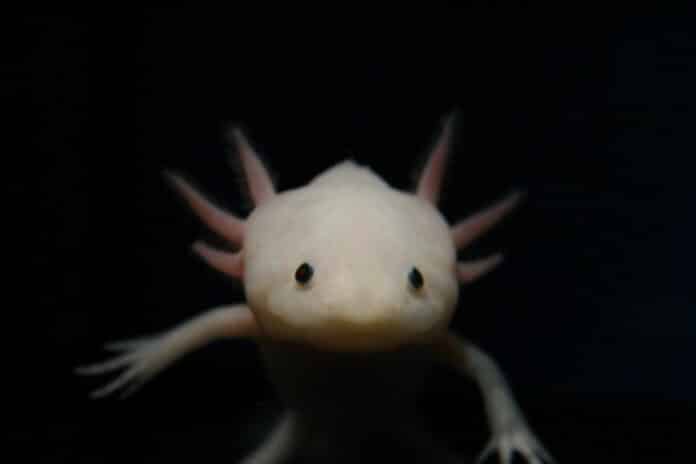Apical-ectodermal-ridge (AER) cells are thought to be necessary for limb development in humans and other tetrapods, and it has been proposed that AER-like cells can arise again to start limb regeneration. Ironically, there is still debate about whether or not the axolotl, a key model organism for regeneration, contains AER.
Axolotl is a type of salamander- it has gathered scientists’ attention for its remarkable ability to regrow lost limbs. It is a focus for researchers seeking to learn the mysteries of limb regeneration because of this unique capability. However, the axolotl’s capacity for regeneration has proven elusive, sparking considerable debate.
Multiple studies trying to understand how the axolotl regenerates its limbs have not determined if these animals use or even have AER cells.
EPFL and TU Dresden scientists have finally unlocked the mechanism of the axolotl’s limb regrowth. They shed light on the axolotl’s unparalleled limb regeneration abilities. The results of this study offer fresh insights with enormous implications for regenerative medicine in humans. It also challenges long-held beliefs and offers new insights into potential mammalian limb regrowth.
Scientists started by creating an atlas of the transcriptome of single cells from multiple species, including the axolotl, humans, mice, chickens, and frogs. The transcriptome represents a comprehensive set of RNA transcripts produced by a cell’s genome.
This approach allowed scientists to objectively determine the axolotl’s distinct cellular landscape during limb regrowth and how similar these animals are to humans by comparing thousands of individual cells from five species, including humans and axolotls.
The atlas’ goal was to identify the genes that are and are not involved in limb growth and regeneration by carefully comparing the gene-expression profiles of various animals.
Jixing Zhong, the first author of the paper and a Ph.D. student in the Aztekin Lab, said, “The deep dive yielded treasure: axolotls have cells with characteristics very similar to AER cells. Despite previous conflicting reports, our work shows that these creatures contain cells with characteristics similar to those essential in arm or leg development in other species, including humans.”
Scientists later used spatial transcriptomics to reveal which genes are expressed in specific tissue parts.
Can Aztekin, an Early Independent Research Scholar (ELISIR) and a Branco Weiss Fellow at EPFL’s School of Life Sciences, said, “The approach revealed that axolotl limbs do not fully reform AER cells during regeneration. During regeneration in the axolotl, the AER-like cells do not completely reform as many had assumed – even countering the dogma in our commonly used textbooks – unveiling a unique approach to limb regrowth in axolotls.”
The research revealed that, like other species, the axolotl uses some basic limb-development AER program, though it is distributed among several cell types. The discovery allows for the exploration of many techniques for limb regeneration in mammals, including humans, in addition to questioning previously held beliefs about limb regeneration and developmental biology.
Zhong said, “While it was previously thought that there was a universal method to limb regeneration, our findings indicate a more complex reality.”
Aztekin continues: “Studying the regenerative capabilities of axolotls and frog tadpoles, evolutionarily the closest species to humans with limb regeneration abilities, we discovered that these species use different cell types during the regeneration process, suggesting that there might be multiple ways to achieve limb regeneration.”
Journal Reference:
- Jixing Zhong, Rita Aires, Georgios Tsissios, Evangelia Skoufa, Kerstin Brandt, Tatiana Sandoval-Guzmán, Can Aztekin. Multi-species atlas resolves an axolotl limb development and regeneration paradox. Nature Communications 10 October 2023. DOI: 10.1038/s41467-023-41944-w
